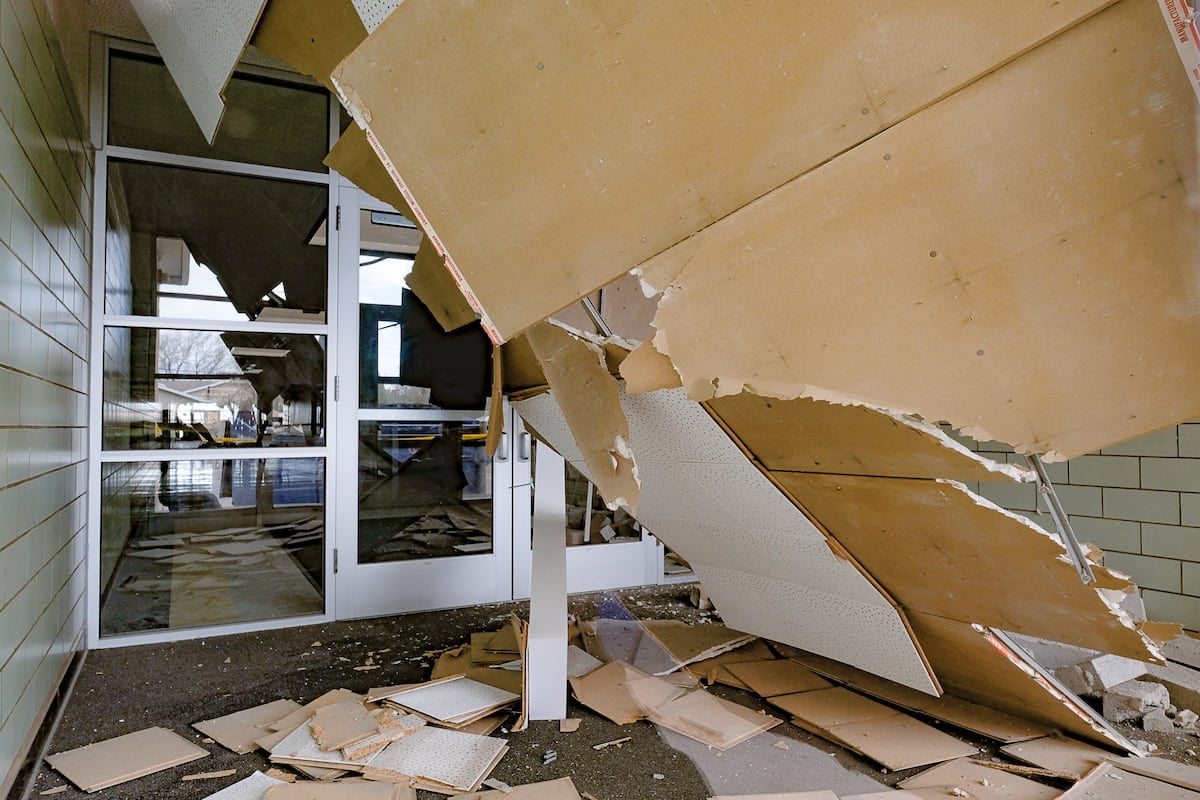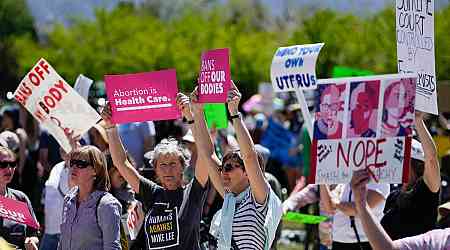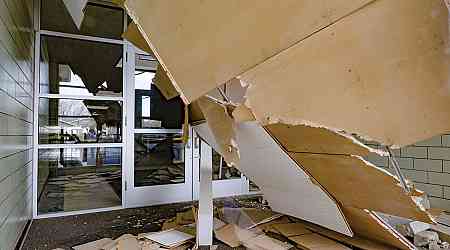St. George • Seismologists and public safety officials don’t want anyone to get rattled in the aftermath of the 4.5 magnitude earthquake that struck southern Utah Sunday, but they do want residents to know more quakes are coming and what they need to do to prepare.
The epicenter of the southern Utah quake, the largest earthquake felt by residents since the 5.7-magnitude trembler that struck Magna in 2020, was about 15.3 miles south of Brian Head in the mountains southeast of Cedar City, according to University of Utah Seismograph Stations.
All told about 1,500 people from Las Vegas north to Idaho Falls and from Page, Ariz., west to Adelanto, Calif., reported feeling the earthquake that occurred at 11:29 p.m. and rattled nerves along with dishes, wall hangings and furniture.
Mario De Jesus, whose dream about a jaunt down a rustic mountain road took a nightmarish turn, was especially flustered.
“I was driving my truck down a washboard road when everything began shaking real hard,” the Hurricane resident said. “Next thing I know I’m wide awake, listening to my dog howl and watching a painting fall from the wall and a coffee cup shatter on the tile floor. I’ve never been in an earthquake before, and I hope I will never be in another. It was scary.”
Weighing the odds
Frightening as the prospect may be, odds are southern Utah residents will experience another earthquake, possibly one that — unlike Sunday’s quake — will be much more devastating. Utah experiences roughly 1,200 earthquakes per year, up from 700 five years ago, according to Utah Division of Emergency Management spokesperson Wade Mathews.
About 90% of Utahns live in areas affected by earthquakes. State seismologists predict the Wasatch Fault, which stretches along the Wasatch Front from Brigham City to Nephi, has a 50% chance of experiencing between a 6.5- and 7.5-magnitude earthquake in the next 45 to 50 years.
“So [the odds] are just like a flip of the coin as to whether we get a big one or not,” Mathews said. “That’s not meant to scare people but to raise awareness that we need to be prepared for it.”
The long-term outlook in southern Utah may not be as dire, according to Emily Morton, a research seismologist with University of Utah Seismograph Stations. Southwestern Utah has experienced more than 170 earthquakes of magnitude one or greater this year. People typically don’t feel earthquakes unless they reach a magnitude of 2.5 or greater, she said.
Sunday’s quake occurred near the Hurricane Fault that cuts through Cedar City. Morton said the fault lines in that area and elsewhere in southwestern Utah have not been studied as extensively as the ones up north.
“We have a really good prehistoric history of the history of Wasatch Front ruptures because they have been trenched and studied excessively,” she said. “To my knowledge, there have not been as many studies done on the Hurricane Fault. But we do think there is a risk of up to a 6.7-magnitude [earthquake] in that area.”
Fortunately, the damage from the southern Utah quake appears to have been minimal. For instance, a crew inspected the Washington County Water Conservancy District’s five reservoirs (Kolob, Sand Hollow, Quail Creek, Ivins and Gunlock) within two hours of the quake and found no damage.
“The reservoirs are spread over 75 miles,” Water District spokesperson Karry Rathje said. “So four employees were given assignments and went to work. All dam inspections were completed before 1:30 a.m., which is remarkable considering the travel time to some of our reservoirs.”
‘Drop, cover and hold on’
While escaping significant damage this time, southwestern Utah has not always emerged unscathed from earthquakes. On September 2, 1992, Morton recalled, a 5.8-magnitude quake erupted on the Washington Fault in St. George, triggering a landslide that destroyed several homes and caused $1 million in damage.
Wildfires may have been in the spotlight this summer, but Mathews said damage from fires and floods pale in comparison to the devastation wreaked by a major earthquake.
“A big earthquake in Utah is going to cause more injuries, fatalities and disruption to infrastructure such as water, power, sewer and roads than other types of hazards we could experience,” he said.
If a magnitude-7 earthquake struck the central part of the Wasatch Fault, damage to buildings in Davis, Salt Lake, Utah and Weber counties could exceed $4.5 billion, according to University of Utah seismologists. Unreinforced masonry buildings, typically built before 1960, would account for 75% of building losses.
In the event of an earthquake, state emergency management officials advise Utahns to employ the “drop, cover and hold on” strategy — to crouch down, take cover under a table or other piece of furniture and hold on. If there is no furniture or other cover, they advise people to drop to their knees and hunker in place against a wall or something that is not near painting or glass.
“If you are inside, stay inside; if you are outside, stay outside,” Mathews said. “Don’t run into or out of a building during an earthquake. If everything is shaking … you won’t be able to move anyway. You just have to drop, cover and hold on wherever you are.”
Precautions that people can take in advance of an earthquake to lessen the danger include fastening water heaters to walls to prevent fire explosions and gas leaks, as well as using “L brackets” or nylon ties to secure heavy, tall furniture to walls.
More safety tips and precautionary measures can be accessed on the state’s Be Ready Utah website.





























